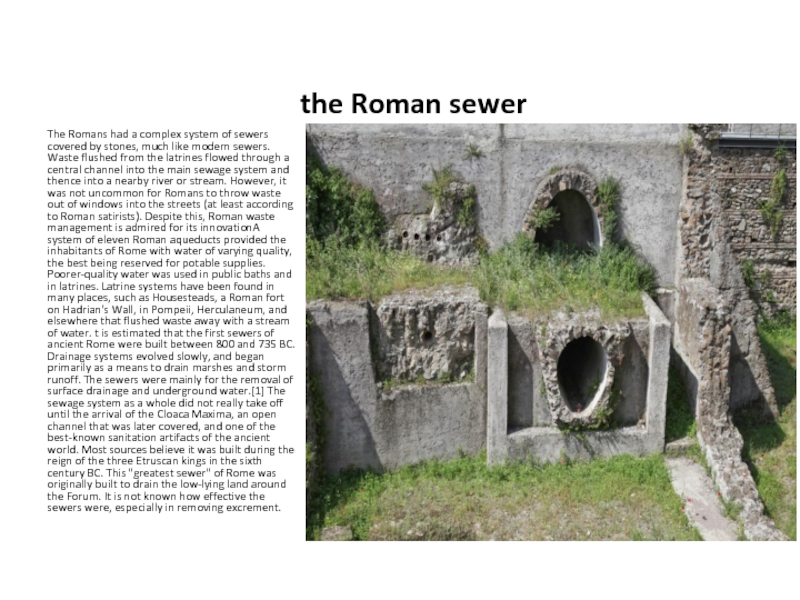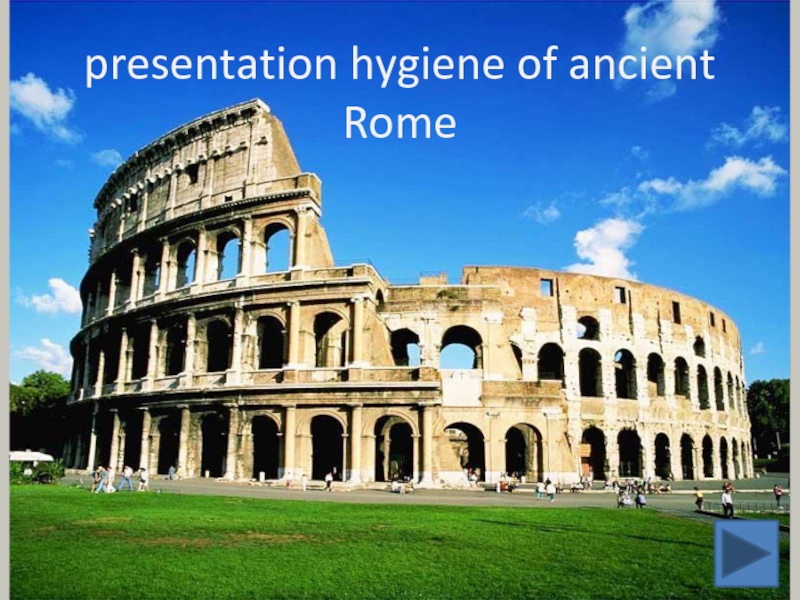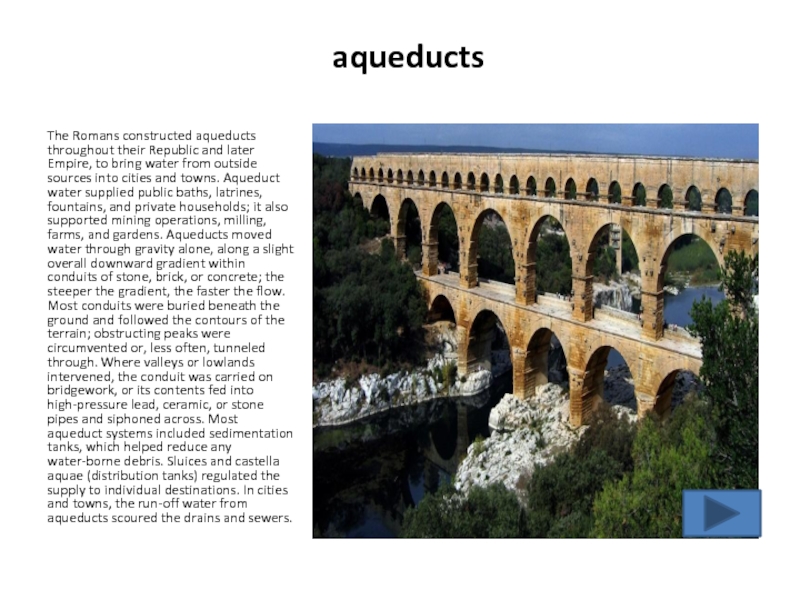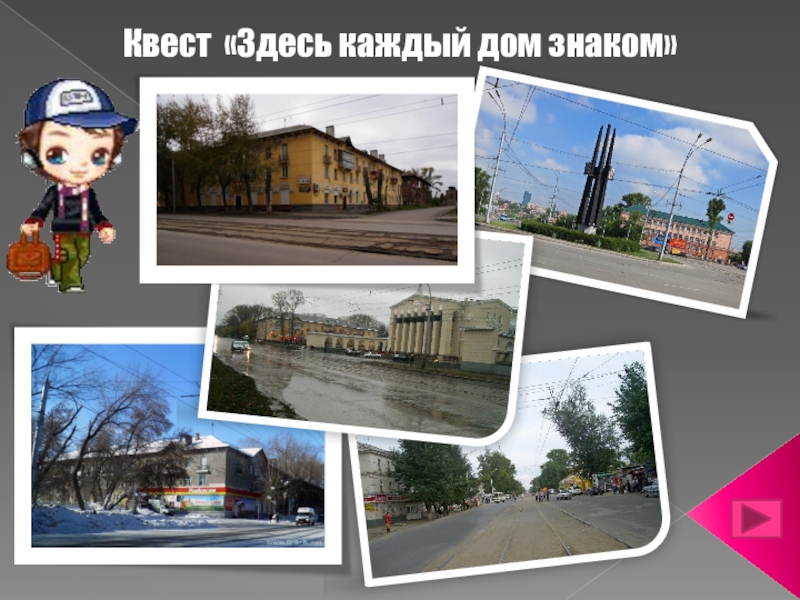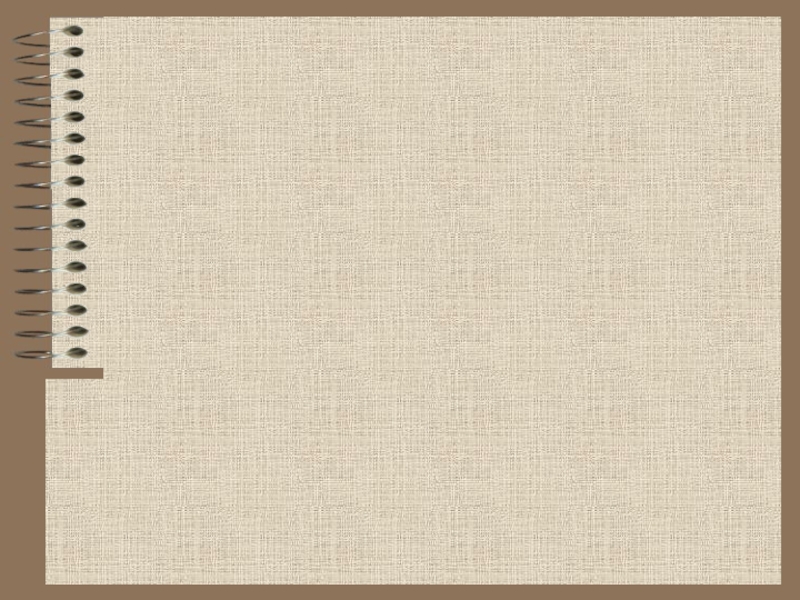Слайд 1presentation hygiene of ancient Rome
Слайд 2Roman bath
Bathing played a major part in ancient Roman culture
and society. It was one of the most common daily
activities in Roman culture, and was practiced across a wide variety of social classes.
Such was the importance of baths to Romans that a catalogue of buildings in Rome from 354 AD documented 952 baths of varying sizes in the city.[1] Although wealthy Romans might set up a bath in their town houses or in their country villas, heating a series of rooms or even a separate building especially for this purpose, and soldiers might have a bathhouse provided at their fort (as at Chesters on Hadrian's Wall, or at Bearsden fort), they still often frequented the numerous public bathhouses in the cities and towns throughout the empire. Romans elevated bathing to a fine art, and their bathhouses physically reflected these advancements. The Roman bath, for instance, included a far more complex ritual than a simple immersion or sweating procedure. The various parts of the bathing ritual (undressing, bathing, sweating, receiving a massage and resting), required separate rooms which the Romans built to accommodate those functions. The segregation of the sexes and the additions of diversions not directly related to bathing also had a direct impact on the shape and form of bathhouses
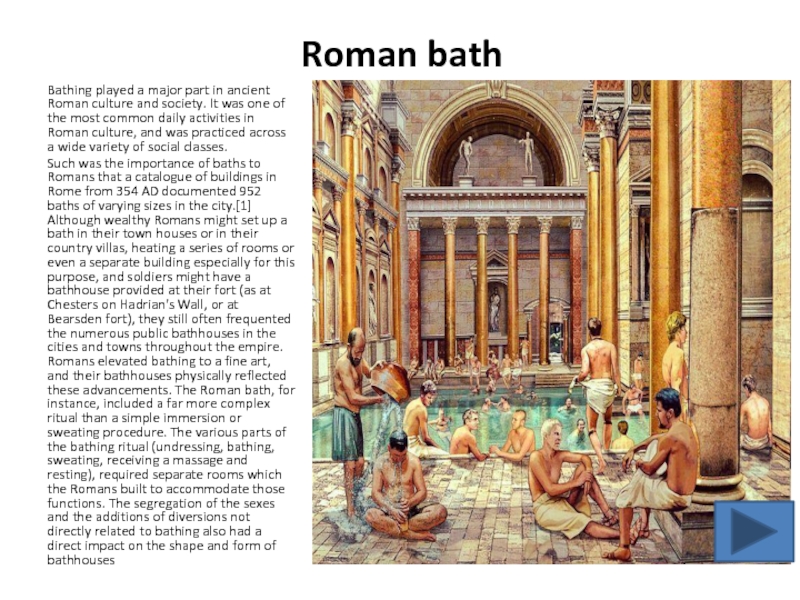
Слайд 3aqueducts
The Romans constructed aqueducts throughout their Republic and later Empire,
to bring water from outside sources into cities and towns.
Aqueduct water supplied public baths, latrines, fountains, and private households; it also supported mining operations, milling, farms, and gardens. Aqueducts moved water through gravity alone, along a slight overall downward gradient within conduits of stone, brick, or concrete; the steeper the gradient, the faster the flow. Most conduits were buried beneath the ground and followed the contours of the terrain; obstructing peaks were circumvented or, less often, tunneled through. Where valleys or lowlands intervened, the conduit was carried on bridgework, or its contents fed into high-pressure lead, ceramic, or stone pipes and siphoned across. Most aqueduct systems included sedimentation tanks, which helped reduce any water-borne debris. Sluices and castella aquae (distribution tanks) regulated the supply to individual destinations. In cities and towns, the run-off water from aqueducts scoured the drains and sewers.
Слайд 4public toilet ancient rome
Public latrines date back to the 2nd
century BC. Whether intentionally or not, they became places to
socialise. Long bench-like seats with keyhole-shaped openings cut in rows offered little privacy. Some latrines were free, for others small charges were made.
Слайд 5the Roman sewer
The Romans had a complex system of sewers
covered by stones, much like modern sewers. Waste flushed from
the latrines flowed through a central channel into the main sewage system and thence into a nearby river or stream. However, it was not uncommon for Romans to throw waste out of windows into the streets (at least according to Roman satirists). Despite this, Roman waste management is admired for its innovationA system of eleven Roman aqueducts provided the inhabitants of Rome with water of varying quality, the best being reserved for potable supplies. Poorer-quality water was used in public baths and in latrines. Latrine systems have been found in many places, such as Housesteads, a Roman fort on Hadrian's Wall, in Pompeii, Herculaneum, and elsewhere that flushed waste away with a stream of water. t is estimated that the first sewers of ancient Rome were built between 800 and 735 BC. Drainage systems evolved slowly, and began primarily as a means to drain marshes and storm runoff. The sewers were mainly for the removal of surface drainage and underground water.[1] The sewage system as a whole did not really take off until the arrival of the Cloaca Maxima, an open channel that was later covered, and one of the best-known sanitation artifacts of the ancient world. Most sources believe it was built during the reign of the three Etruscan kings in the sixth century BC. This "greatest sewer" of Rome was originally built to drain the low-lying land around the Forum. It is not known how effective the sewers were, especially in removing excrement.
